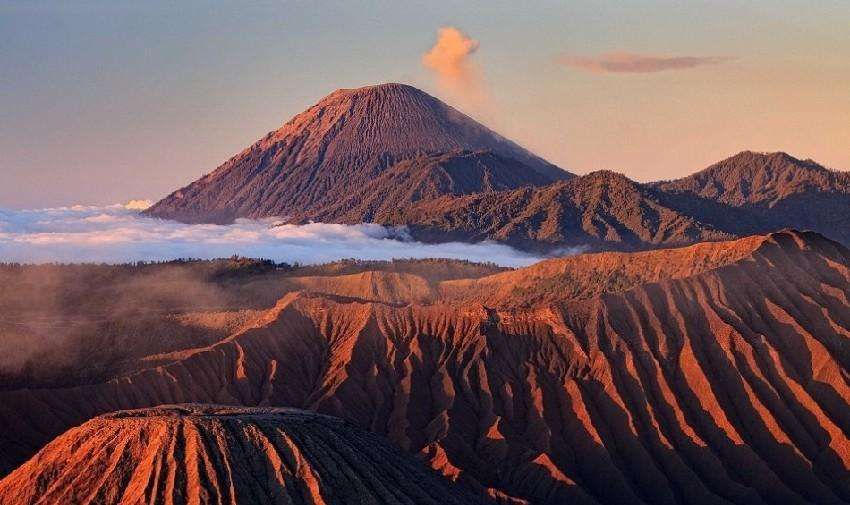第六部 通向我们的路
Descended from the apes! My dear, let us hope that it is not true, but if it is, let us pray that it will not become generally known. —Remark attributed to the wife of the Bishop of Worcester after Darwin's theory of evolution was Explained to her
我们是猿的后裔!天哪,真希望这不是真的。果真是这样的话。让我们祈祷不要让大家知道。——沃斯特主教的妻子对达尔文进化论的感言
27 Ice Time
第二十七章 冰河时代
I had a dream, which was not all a dream.
我做了一个梦,实际上也不完全是一个梦。
The bright sun was extinguish'd, and the stars Did wander ... —Byron, "Darkness"
耀眼的太阳熄灭了,而星星仍在空中四处闲逛……——拜伦《黑暗》

In 1815 on the island of Sumbawa in Indonesia, a handsome and long-quiescent mountain named Tambora exploded spectacularly, killing a hundred thousand people with its blast and associated tsunamis. It was the biggest volcanic explosion in ten thousand years—150 times the size of Mount St. Helens, equivalent to sixty thousand Hiroshima-sized atom bombs.
1815年,在印度尼西亚松巴哇岛,一座名为坦博拉的漂亮而又长期休眠的火山突然大规模喷发,喷涌而出的熔岩以及相伴而来的海啸夺走了10万人的生命。这是近1万年内最猛烈的一次火山喷发——其规模是1980年美国圣海伦斯火山喷发的150倍,其能量相当于6万颗广岛原子弹。
News didn't travel terribly fast in those days. In London, The Times ran a small story—actually a letter from a merchant—seven months after the event. But by this time Tambora's effects were already being felt. Thirty-six cubic miles of smoky ash, dust, and grit had diffused through the atmosphere, obscuring the Sun's rays and causing the Earth to cool. Sunsets were unusually but blearily colorful, an effect memorably captured by the artist J. M. W. Turner, who could not have been happier, but mostly the world existed under an oppressive, dusky pall. It was this deathly dimness that inspired the Byron lines above.
那个年代消息传播的速度非常慢。在坦博拉火山喷发后7个月,伦敦《泰晤士报》才刊登了一篇简短报道——实际上是一封商人来信。而火山喷发所产生的影响,这时候人们早巳经感觉到了。240立方公里的烟尘遍布整个大气层,使阳光变得朦胧,地球的气温下降。日落时分,阳光出奇的暗淡,此情此景,被高兴透顶的英国画家J.M.W.特纳捕捉下来。可是在大多数时间里,人们只能生活在令人窒息的可怕的黑暗中。这种死一般的昏暗景象给了诗人拜伦灵感,于是他写下了本章开头所引的那几行诗。













